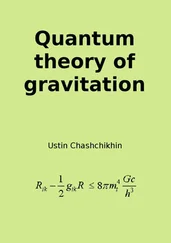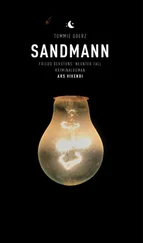Tom Grace - Quantum
Здесь есть возможность читать онлайн «Tom Grace - Quantum» — ознакомительный отрывок электронной книги совершенно бесплатно, а после прочтения отрывка купить полную версию. В некоторых случаях можно слушать аудио, скачать через торрент в формате fb2 и присутствует краткое содержание. Жанр: Шпионский детектив, на английском языке. Описание произведения, (предисловие) а так же отзывы посетителей доступны на портале библиотеки ЛибКат.
- Название:Quantum
- Автор:
- Жанр:
- Год:неизвестен
- ISBN:нет данных
- Рейтинг книги:3 / 5. Голосов: 1
-
Избранное:Добавить в избранное
- Отзывы:
-
Ваша оценка:
- 60
- 1
- 2
- 3
- 4
- 5
Quantum: краткое содержание, описание и аннотация
Предлагаем к чтению аннотацию, описание, краткое содержание или предисловие (зависит от того, что написал сам автор книги «Quantum»). Если вы не нашли необходимую информацию о книге — напишите в комментариях, мы постараемся отыскать её.
Quantum — читать онлайн ознакомительный отрывок
Ниже представлен текст книги, разбитый по страницам. Система сохранения места последней прочитанной страницы, позволяет с удобством читать онлайн бесплатно книгу «Quantum», без необходимости каждый раз заново искать на чём Вы остановились. Поставьте закладку, и сможете в любой момент перейти на страницу, на которой закончили чтение.
Интервал:
Закладка:
Beside the curved wall of glass that bowed outward into the woods, Kelsey spotted Ted Sandstrom and his mentor, Raphaele Paramo.’
‘Nolan,’ Sandstrom called out as they approached, relief visible on his face. ‘I was afraid you weren’t going to show.’
‘Wouldn’t miss it, Ted,’ he replied, then introduced Kelsey to the two physicists.
‘Professor Newton,’ Paramo said, shaking her hand enthusiastically, ‘this is indeed a pleasure. I’ve read your paper on optical electronics. Very interesting work.’
‘Thank you,’ Kelsey replied, enjoying the admiration of a respected peer.
Sandstrom then clasped her hand warmly. ‘I understand we have you to thank for our being here today.’
‘That may be overstating things a bit,’ she demurred. ‘All I did was look over the report that Notre Dame sent to MARC regarding your research. After I read it a few times – I admit it took more than one pass to really comprehend what you and Professor Paramo have accomplished – I told Nolan’s father that he’d be a fool not to take a closer look.’
‘Well, thank you for your vote of confidence.’
Across the room, Sean Kilkenny began to address those assembled. ‘Ladies and gentlemen,’ his amplified voice resonated above the murmuring conversations, ‘if you’ll kindly take your seats, we can move on to the next item on our agenda.’
The MARC board of directors, a mix of business executives and university regents, took their places at the conference table. Around the periphery of the room, members of the still-forming Notre Dame Applied Research Consortium (ND-ARC) and important guests of both universities returned to their seats. Sean Kilkenny waited until everyone was ready before proceeding.
‘Last fall I had the pleasure of meeting our guest presenter while in South Bend for the Michigan-Notre Dame football game. While I am sure that some of us were pleased with the outcome of that game’ – MARC’s founder paused as a ripple of laughter followed his remark – ‘I am doubly sure that others here are looking forward to the rematch this fall.’ Another pause for partisan laughter. ‘Be that as it may, my encounter with Ted Sandstrom, a professor of physics at Notre Dame, left a far greater impression on me than the game. Fellow board members and honored guests, I would like to introduce Professor Ted Sandstrom.’
The MARC director stood aside as Sandstrom approached the podium carrying a large Halliburton case.
‘They’re all yours, Ted,’ Sean said quietly as he clipped a wireless microphone to Sandstrom’s lapel.
Sandstrom looked over his audience. He recognized among the guests several wealthy Notre Dame alumni and a few of the regents. The presidents of both universities were seated together along the left wall. A sudden wave of nausea hit him, but it quickly subsided as he realized that this was no different from any classroom he’d ever been in. He was there to teach these people something about physics, and that was something he did very well.
‘Good afternoon. As Mr Kilkenny said, I am a physicist. More precisely, I am an experimental physicist, which means I like to test ideas to see whether or not they work.’
Sandstrom pressed a button on the podium; the lights dimmed and the Asian symbol for yin and yang appeared on the large, flat wall display.
‘In declaring that E equals mc squared, Einstein linked energy and matter together in such a way that the two are inseparable and, in some ways, indistinguishable. Matter is a manifestation of energy. If you label the left side of this symbol as matter’ – Sandstrom pointed to the black yang – ‘and the right as energy, then the region that I’m interested in is here.’
Sandstrom traced the S line that defined the border between yin and yang.
‘Here, in the boundary between matter and energy, resides the realm of quantum physics. This is where the classical physics of Newton and Galileo fall apart. The mathematical precision that we use to describe the motion of the planets is dethroned by an uncertainty principle that replaces absolutes with probabilities. In this thin edge, the distinction between matter and energy blurs.’
Sandstrom touched the podium keyboard again, and the image transformed into a horizontal grid, tilted slightly upward to show perspective. At random intervals two sections of the plane would distort, one spike warping upward while another went in the opposite direction. The warped areas would break free like water droplets and form gridded spheres that moved about briefly before being reabsorbed by the plane.
‘The plane you see in this illustration represents a negative-energy state. This condition exists only in a vacuum in which all matter has been removed. In this state, quantum theory predicts that fluctuations in this energy allow for the spontaneous creation of both matter and antimatter.’ Sandstrom pointed at the gridded spheres. ‘Theory also states that these particles disappear rather quickly, and being a balanced system, the net energy is essentially zero. This just shows, even at a quantum level, that you can’t get something for nothing.’
The gridded plane expanded and curled around on itself, forming a sphere.
‘One theory about the origin of our universe puts it in a negative-energy state at the start of the Big Bang.’
Sandstrom zoomed in on the gridded sphere just as thousands of tiny blue and red particles appeared inside it.
‘Now if matter and antimatter are created in equal amounts, then all these new particles should have collided with their opposites and annihilated each other in a burst of energy – leaving the universe a net zero.’
The red and blue particles quickly disappeared, and the gridded sphere collapsed into nothingness.
‘This outcome is true only for a perfectly symmetrical universe. Suppose that our universe was asymmetrical, and at the moment of the Big Bang, there was more matter than antimatter.’
The new animation showed thousands of red and blue particles racing around, each collision giving off a brief white flash. After a few seconds the gridded sphere held only blue particles. The view panned out as the sphere expanded until it evolved into a spiraling galaxy and then gradually changed back into the yin-yang symbol.
‘If this theory is valid, the question becomes: What caused the universe to be asymmetrical, allowing unequal amounts of matter and antimatter particles to be produced?’ Sandstrom paused briefly and looked over his audience. ‘At this point, I suspect that more than a few of you are wondering where I’m going with this presentation. So let me backtrack a bit for you. Eleven years ago Professor Raphaele Paramo and I began to investigate the effect of strong electrical fields on totally evacuated spaces. Our experiments had some very interesting results.’
Sandstrom tapped the keyboard, and a photograph of a laboratory, scorched and in shambles, filled the screen.
‘This one got away from us.’ A brief laugh rose from the audience. ‘Based on the theoretical calculations, the energies involved in this experiment should have been very low. As you can see, theory and reality were not in agreement. When we activated our test apparatus, an energy surge built up inside the evacuated chamber. The chamber quickly ruptured and a ball of lightning emerged. This coherent sphere of electricity floated around the lab for a few seconds before landing on an electrical panel. The explosion and resulting fire did significant damage to our lab. Fortunately, no one was hurt.’
The President of Notre Dame nodded, recalling the incident clearly.
‘We rebuilt our laboratory and began to probe further into the discrepancy between theory and experiment. Here is the result of that work.’
Читать дальшеИнтервал:
Закладка:
Похожие книги на «Quantum»
Представляем Вашему вниманию похожие книги на «Quantum» списком для выбора. Мы отобрали схожую по названию и смыслу литературу в надежде предоставить читателям больше вариантов отыскать новые, интересные, ещё непрочитанные произведения.
Обсуждение, отзывы о книге «Quantum» и просто собственные мнения читателей. Оставьте ваши комментарии, напишите, что Вы думаете о произведении, его смысле или главных героях. Укажите что конкретно понравилось, а что нет, и почему Вы так считаете.
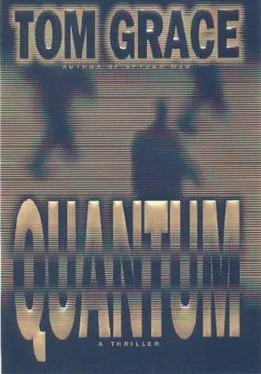
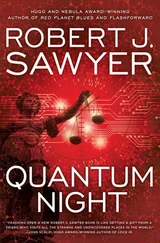
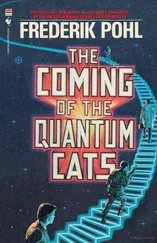
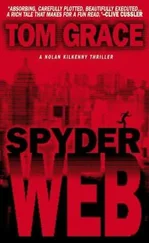
![Алексей Лавров - Quantum Ego [СИ]](/books/414972/aleksej-lavrov-quantum-ego-si-thumb.webp)
![Алексей Лавров - Quantum compita [СИ]](/books/414973/aleksej-lavrov-quantum-compita-si-thumb.webp)



